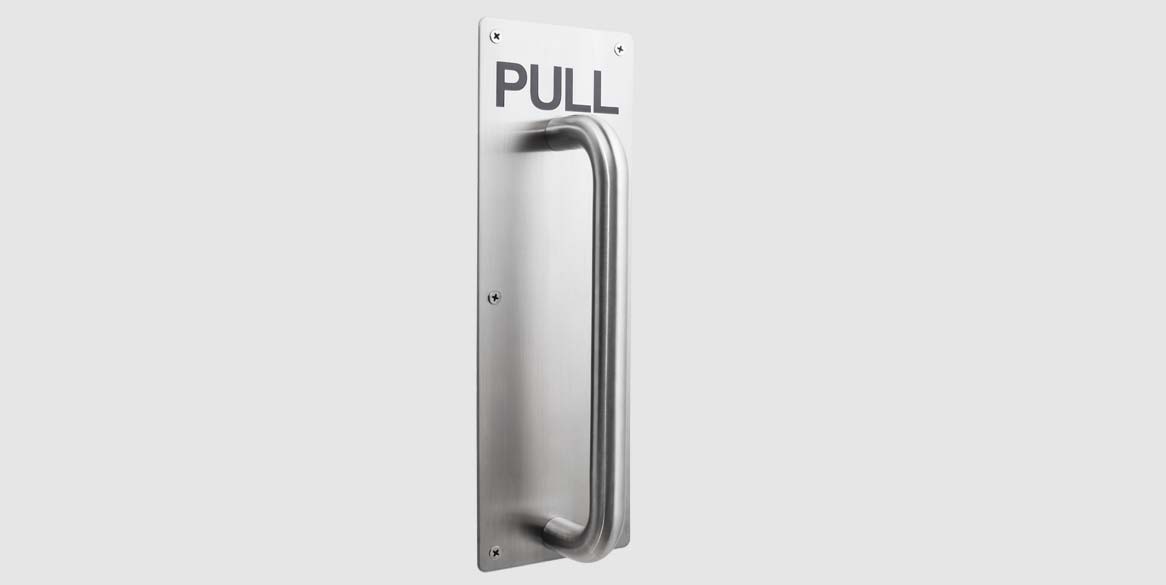_(1820_×_700_px)_3.png)
_(1820_×_700_px)_3.png)
_(1820_×_700_px)_3.png)
Daniel May, Director at Consort Architectural Hardware explores the close relationship between fire safety and ironmongery and how compliance becomes compromised without essential hardware components.
Unpredictable and untameable, fire is a beast that we can’t afford to ignore. It doesn’t prejudice against any building type, and as we’ve seen most recently in Whitechapel, London, it can cause immeasurable damage and loss when fire safety isn’t prioritised.
Fire safety itself is a complex topic, covering a wide range of subjects and themes, from prevention to containment and evacuation - all of which carry great significance when designing and maintaining a fire-safe building. For a building’s architects, specifiers, inspectors and owners, it’s imperative to provide an acceptable level of fire safety for occupants and visitors alike. And for this, fire doors play an integral role.
Recognised as part of a building’s passive fire protection system, fire doors are a means of escape and are tasked with compartmentalising smoke and fire during a fire incident. In doing so, they protect the property and its people for a specified time, most commonly resisting for 30 (FD30) or 60 (FD60) minutes. Yet, fire doors aren’t the only piece of the puzzle.


Combined protection
As is outlined by the Guild of Architectural Ironmongers (GAI), ironmongery and fire safety share a distinguished relationship. To assure performance and compliance, all dedicated fire doors, other than those to locked cupboards and service ducts, must be fitted with the necessary ironmongery components. This includes hinges, door closers, locks and latches.
Each of these hardware components are designed to operate in tandem with a fire door – without them, the door is made redundant. In fact, the integrity of a fire door could immediately be compromised should one area become damaged or fail to meet strict performance standards. To eliminate vulnerabilities, hardware, in accordance with the UK Construction Products Regulations (CPR) must be CE marked (or UKCA after the 1st January 2023) to prove fire performance, and it is a criminal offence to supply products that do not comply.
Fire door closers for example, whether concealed or surface mounted, are required to perform what is considered an essential function in closing a door to completion from any angle into its frame or until the latch engages. In facilitating the closing motion, door closers play an active role in ensuring a fire door accomplishes compartmentation. Because of their significance, controlled closing devices must be tested to BS EN 1154 and fire rated to BS EN 1634. Upon application, a closer must also be compatible with a door’s existing mechanisms and in addition to CE marking, it is highly advised it should be approved by a third-party scheme such as CERTIFIRE, providing the detail needed for its application.
Similarly, hinges and latches play an important role in ensuring the integrity of a fire door. Commonly, three hinges are applied to fire doors, and at all times must remain adequately attached, repressing any charring or damage to the door’s timber in the event of a fire. Locks and latches are also essential, assuring a door remains closed within its frame, and thus, provides an effective barrier in the event of a fire. Because of their significance, locks and latches must also be CE marked and tested to BS EN 12209, with many professionals, such as architects, also demanding CERTIFIRE approval for the hardware they use.

.jpg)
Maintaining safety and compliance
Under the Regulatory Reform (Fire Safety) Order 2005, should a building fall short in its fire safety practices, the associated party is under risk of receiving heavy penalties and fines. Compliance is a continuous process and so, fire doors and their fitted hardware must remain operational and effective throughout the entire lifecycle of a building.
To preserve fire performance, regular maintenance is vital. Aside from being up to code, the operational functions of all door furniture items should be checked regularly, including any additional mandatory components such as the operating furniture, intumescent seals (designed to expand and hold the door within its frame in the event of a fire) and relevant door signage. If basic maintenance is neglected, a fire door’s operational life can be significantly reduced - even with the correct hardware in place.
The Regulatory Reform (Fire Safety) Order 2005 recognises this, making it a legal requirement to ensure that fire resisting doors are correctly installed and adequately maintained to be fit to purpose. To keep the building protected, workplace environments for example, must designate a Responsible Person (RP) to undertake regular fire safety risk assessments, inspecting all elements of fire safety including the operation of fire doors. As part of ongoing risk assessments, regular maintenance periods are critical and provide Responsible Persons with an opportunity to review and repair any damage to a door’s working components. Should any hardware issues be raised, decision makers must act quickly and seek professional support to replace or repair the ironmongery until the door is once again fully operational.
Whether in a commercial, residential, or institutional space, a functional fire door is paramount in delivering a building’s fire safety, but only when operating in tandem with ironmongery can it deliver its purpose. All stakeholders and responsible persons found throughout the supply chain must recognise this significant relationship between ironmongery and fire safety, or risk falling short of stringent fire safety standards. Because, simply put, door hardware is more than just a finishing touch, it’s a fire safety enabler.
Sources
https://www.theguardian.com/uk-news/2022/mar/08/whitechapel-tower-fire-london
https://www.nationalfireltd.co.uk/fd30-and-fd60-fire-doors/
https://www.gov.uk/guidance/ce-marking
https://www.firesafe.org.uk/british-standard-476-fire-tests/
https://www.warringtonfire.com/certification-services/fire-certification/certifire
https://www.legislation.gov.uk/uksi/2005/1541/contents/made
https://www.gov.uk/workplace-fire-safety-your-responsibilities/fire-risk-assessments